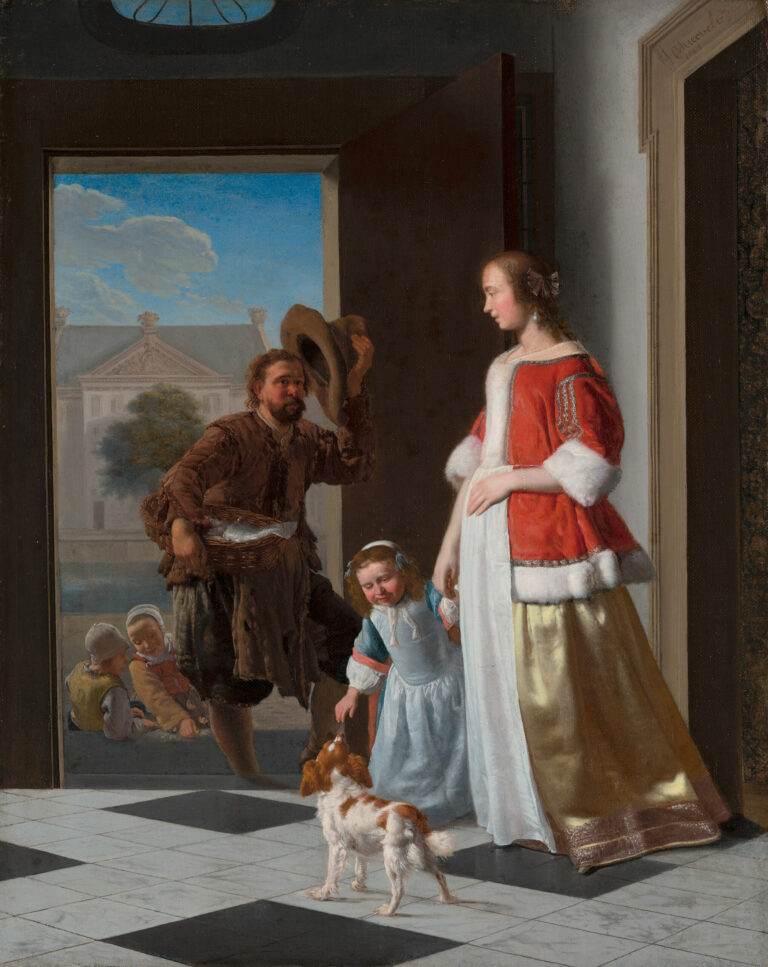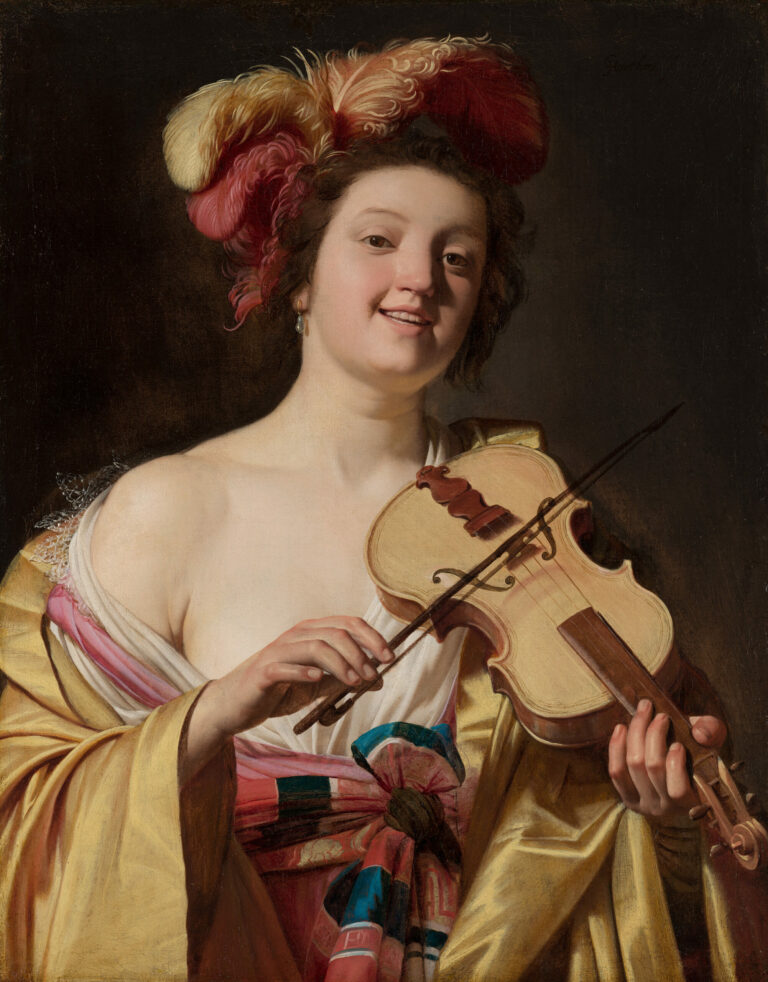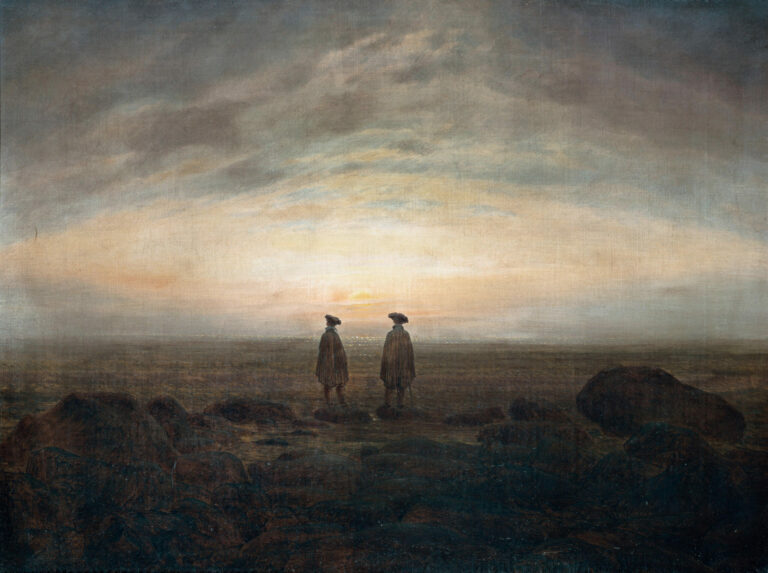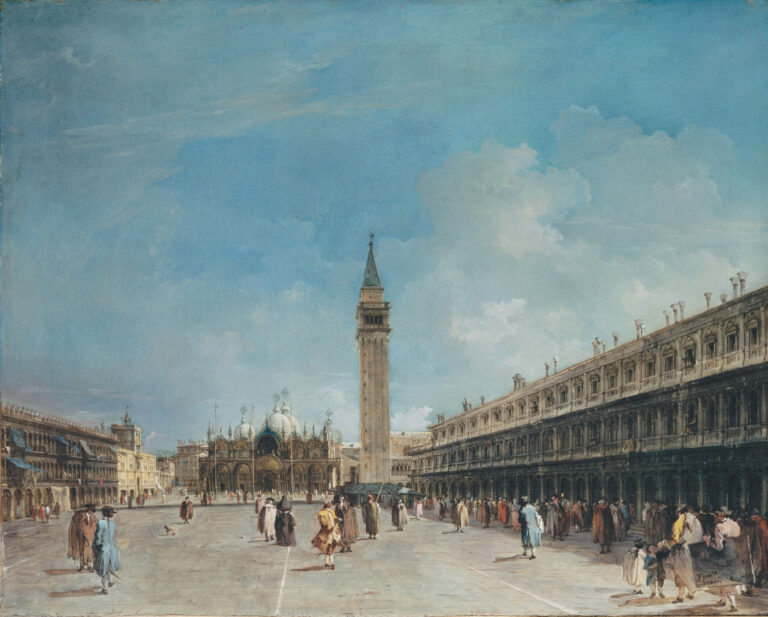In this work, Nicolaes Maes offers us a window into feminine interiority during the Dutch Golden Age.
The composition is structured around this pensive young woman, leaning on her windowsill with her chin delicately resting on her hand. The tight framing emphasizes the impression of a visual confidence that the artist shares with us. The chiaroscuro, inherited from his master Rembrandt, sculpts the face of the dreamer, whose luminous flesh tones emerge from the darkness.
The chromatic palette, dominated by warm tones—the orange-red of the window frame and the vermillion band encircling her headdress—creates a visual dialogue with the apricots flourishing on the branches surrounding the window. This vegetal motif, a symbol of fertility, establishes a subtle correspondence between nature and femininity.
Additional Information
- Girl at a Window, known as ‘The Daydreamer’ by Nicolaes Maes, circa 1650-1660
- 123 x 96 cm
- The Rijksmuseum, Amsterdam
- https://www.rijksmuseum.nl/en/collection/object/Girl-at-a-Window-known-as-The-Daydreamer–594d21ece0f7af9872f9050289e0a6f9
Nicolaes Maes (1634-1693), one of Rembrandt’s most brilliant pupils, developed a distinctive style that would profoundly influence Dutch genre painting. Born in Dordrecht, he trained in the master’s workshop in Amsterdam before returning to his native city where he initially specialized in domestic scenes imbued with psychological observation. While his early works bear the evident imprint of Rembrandt’s teaching—particularly in the treatment of chiaroscuro and emotional depth—Maes gradually asserted his artistic singularity.
In the 1660s, he directed his career toward fashionable portraiture, a more lucrative genre that brought him immense success. His art combines technical mastery, a particular sensitivity to feminine states of mind, and a sense of instantaneity that gives his subjects a powerful presence.







